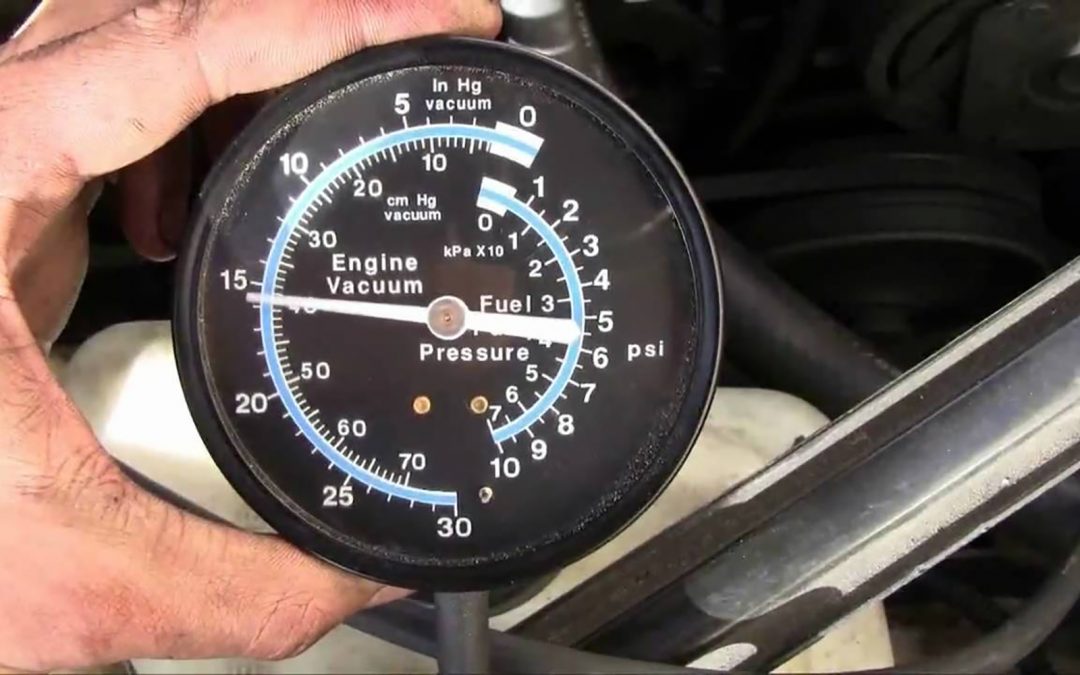Mechanics often joke that an internal combustion engine is just a gigantic air pump. This is because the pistons move up and down in the cylinders, sucking air in and compressing the air/fuel mixture. Intake vacuum is created as a result of the pistons pumping and the restriction of the throttle plate.
Proper vacuum is required for an engine to run properly. Many parts of the vehicle rely on the intake manifold vacuum for operation. Depending on the vehicle, everything from the brake booster to the fuel pressure regulator may require intake manifold vacuum. Lack of vacuum can also cause problems by allowing unmetered air to enter the engine. This disrupts the air/fuel ratio. On really old vehicles, vacuum is also required to pull fuel into the carburetor.
Vacuum readings and what they mean
Generally, a healthy engine should produce a steady 17 to 21 in. Hg of vacuum at idle. This measurement is typical of a vehicle at sea level. Readings will decrease by about 1 in. Hg for every 1000 ft. increase in altitude.
Vacuum can be measure by connecting a vacuum gauge to a source of manifold vacuum. An intake vacuum reading that is out of specification can indicate anything from an internal engine problem to a leaking exhaust gas recirculation valve (EGR). Here are a few possible causes of different vacuum gauge readings.
- Low but steady gauge reading: late timing, low engine compression, throttle body, or intake gasket leaks
- Needle fluctuates as RPMs increase: weak valve springs, worn valve guides, clogged catalytic converter, or leaking head gasket
- Gradual drop in reading at idle, reading decreases with engine speed: Clogged catalytic converter or restricted exhaust system
- Intermittent fluctuation at idle: sticking valves or ignition misfire
- Drifting needle: leaking intake manifold or bad fuel injector o-rings
- Needle that drops regularly: burn valve or improper valve clearance
- Needle that fluctuates at idle but steadies as engine speed increases: worn valve guides
Symptoms of a vacuum leak
A vacuum leak will cause the engine to run lean. In other words, there will be more air entering the engine than is needed to balance out the air/fuel ratio. This can result in the following:
- Engine stalling
- A rough running engine
- Too fast of an idle
- Hesitation
- Increased emissions
- Poor fuel economy
- An illuminated check engine light
Diagnosing a vacuum leak
If you have access to a scan tool, you’ll want to use that first during diagnosis. Select the data parameters short term fuel trim (STFT) and long-term fuel trim (LTFT). On most vehicles, fuel trim readings should be between -10 and +10 with the vehicle at operating temperature. A reading greater than +10 indicates the powertrain control module (PCM) is trying to add fuel to compensate for a lean condition. To determine if the lean condition is the result of a vacuum leak, bring the engine up to about 2,000 RPM. If the readings return to normal, there is a vacuum leak.
If you don’t have a scan tool, you can visually inspect under the hood for leaks. You can also listen for leaks, which can sometimes be heard making a hissing noise. Then, follow up with one of the location methods listed below.
Locating a vacuum leak
Vacuum leaks can originate from various sources. Here are some of the most common:
- Hoses and lines
- The Intake manifold and/or gaskets
- The throttle body and/or gasket
- The EGR valve
- The brake booster
There are a few different ways to locate a vacuum leak. The best method is to use a professional smoke machine. These devices send smoke into the intake manifold. If there is a leak, the smoke will be seen billowing out. Unfortunately, these devices are quite costly and outside the budget of most DIYers.
A second method is to spray brake or carburetor cleaner around the area of a potential leak. If there is a leak, the cleaner will artificially enrich the air/fuel mixture. This will cause the engine RPMS to increase when the cleaner is sprayed near the source.
How to repair vacuum leaks
In theory, repairing a vacuum leak is simple: you replace the leaking component. In reality, this could mean anything from replacing a broken vacuum line (easy) to replacing a cracked intake manifold (difficult). Whatever the case may be, you’ll need to repair the leak to get your vehicle running right.
Hopefully, you now have a better understanding of an intake vacuum and the role it plays in engine performance. Modern engines are extremely complex with all their modern electronics, but that doesn’t mean they can’t still fall victim to a simple mechanical faulty, such as a vacuum leak.

